Description
Europe the last quarter of the XV century
Steel 3, thickness 1.5 mm
Matt Grinding
Forged Buckles
In Italy, the brigandine was abandoned at the end of the XIV century — in favor of cuirasses. As seen on the armor of Churburg 1410, already cuirass of steel to forged components — front part consisted of a breastplate and girdle, connecting belt with buckle, back — segment back plate.
The differences in the individual designs, apparently, were caused by the requests of the customers of each specific armor, and consisted in the shape and size of the navel, the presence of intermediate segments between it and the breastplate, the size of the breastplate, and so on.
In some armor (for example, the armor of Robert de Sanseverino), the cuirass was forged as a whole, and an additional movable part was inserted under it to support the spear.
In other armor (in particular, in various export versions), a stiffening rib appears in the middle of the breastplate, more characteristic of the armor of the late XV century.
Basically, cuirasses were forged with a barrel chest (English: globose chestplate), the breastplate was forged in such a way that it strongly overlapped the navel, while serving as additional protection from a spear hit in the stomach.
The spear rest was attached to the breastplate, apparently with rivets, so that the wearer could comfortably hold the spear under his arm in a cavalry charge, and then throw it off and take up a sword or other slashing weapon.
Back Guards in Milanese cuirasses were forged as one-piece and multi-segment (which is clearly visible on the armor of Frederick I), the segmental design was made to increase mobility, and often covered the top with shoulder pads, which were sometimes forged in such sizes that they overlapped one another and covered the entire upper back.
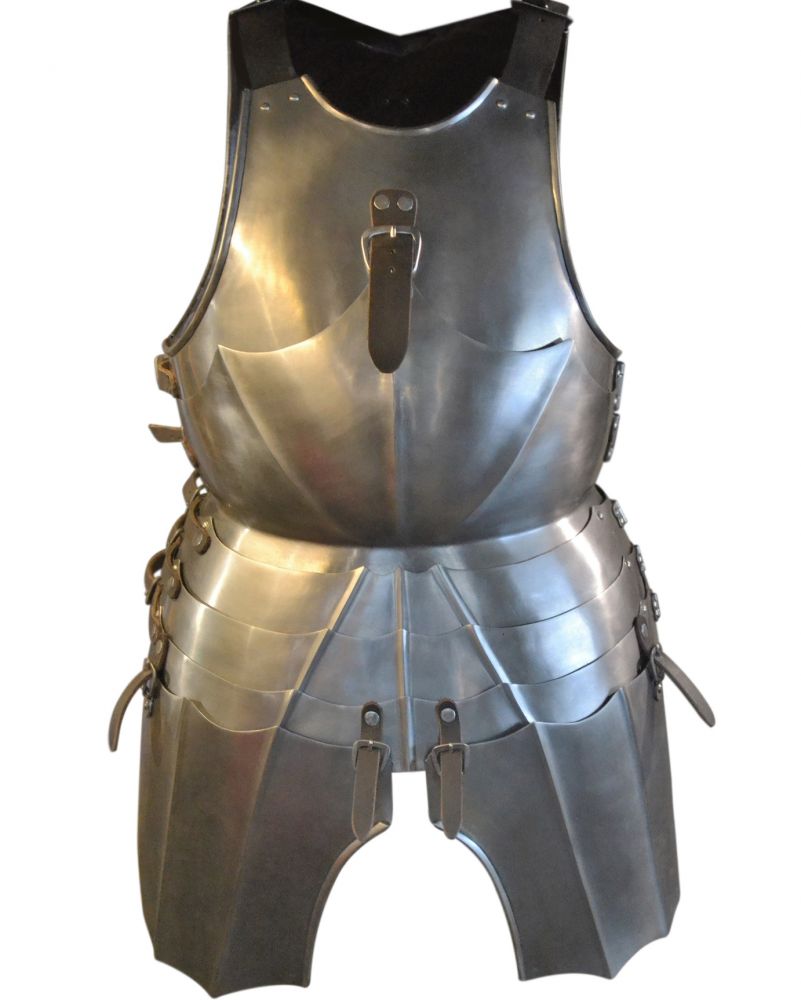
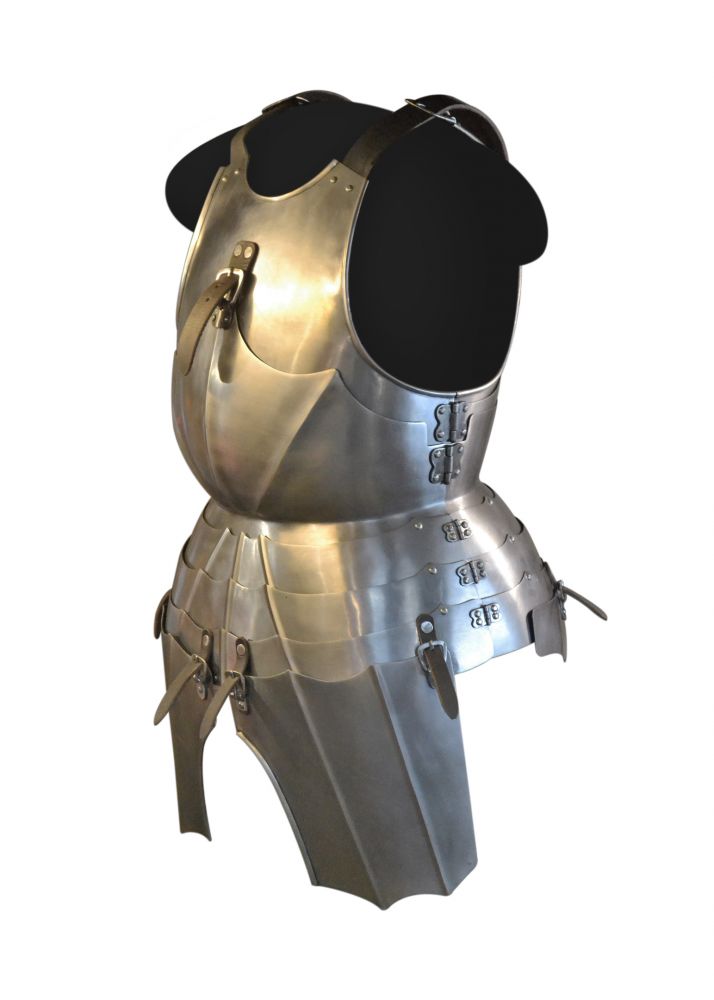

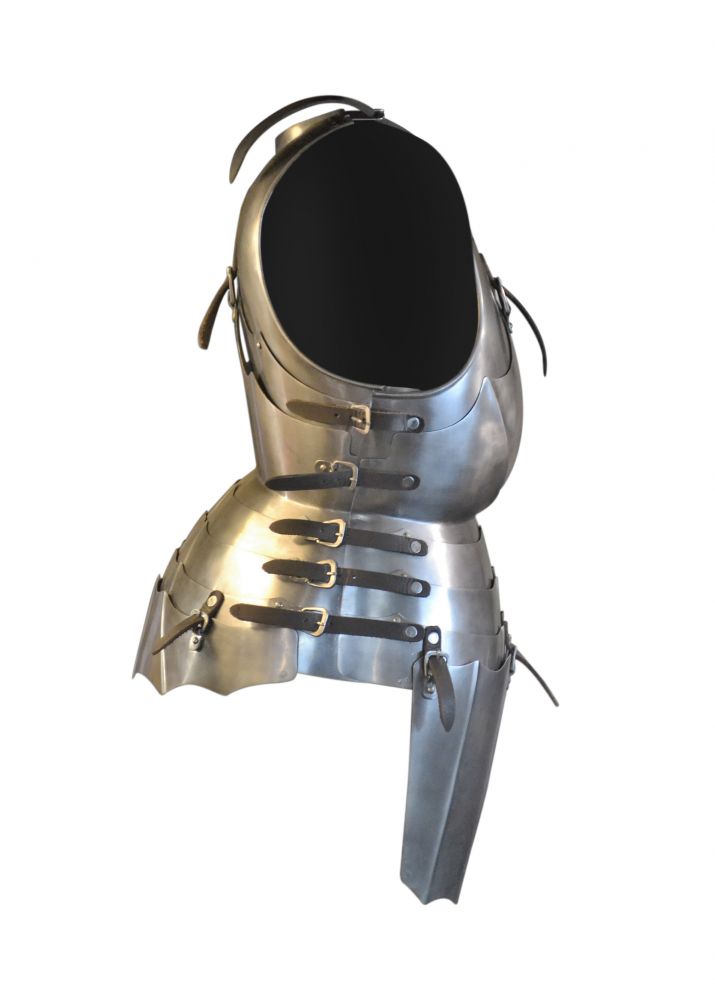

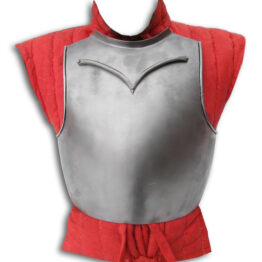
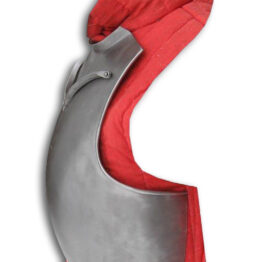
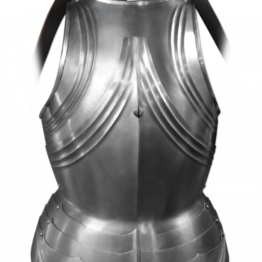
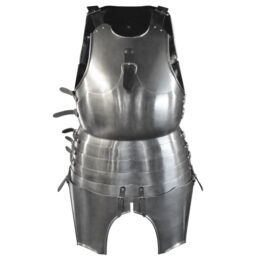
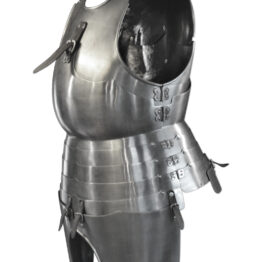
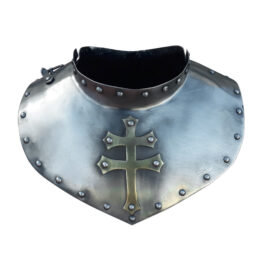
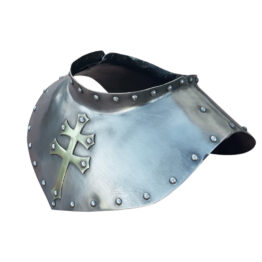

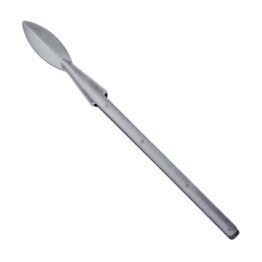
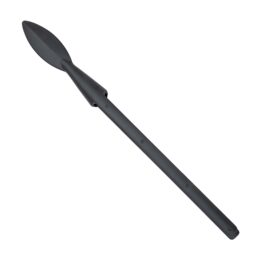
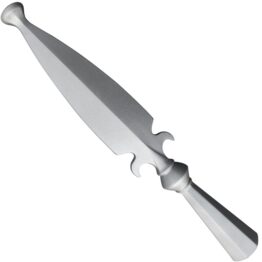
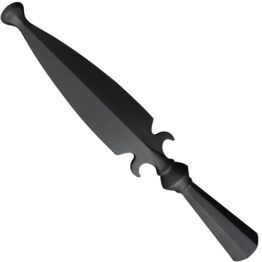
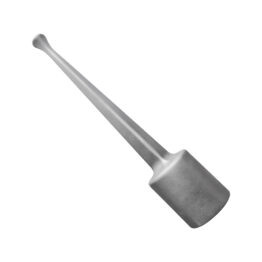
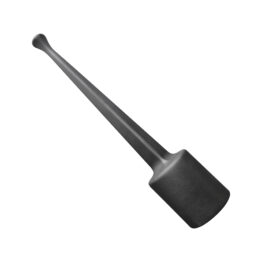
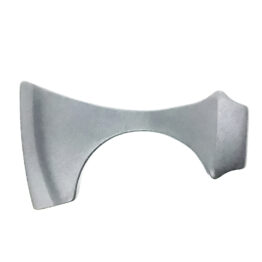
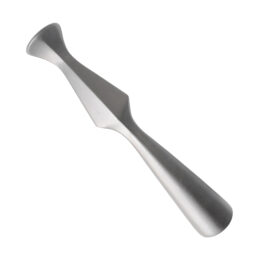
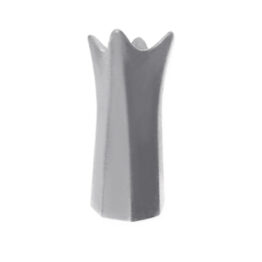
Reviews
There are no reviews yet.